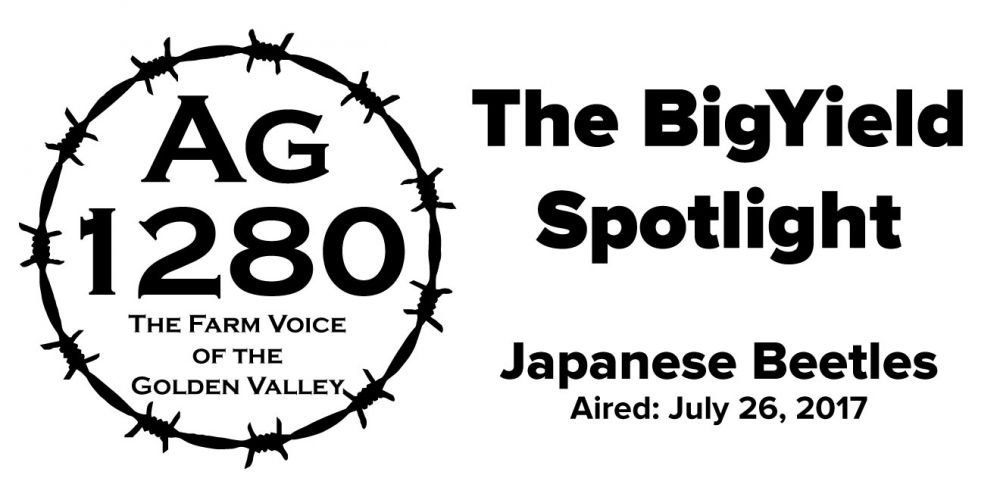
Landon Teal discusses how to identify Japanese Beetles and how to control them in the field.
Listen to the BigYield.us team and Kyle Hill, Ag 1280 Farm Director, each Monday, Wednesday, and Friday on Ag 1280 KDKD-AM. The segments air at 7:15 am and again at 12:15 pm.
This segment originally aired on July 26, 2017.
Audio Transcript
Kyle: Time for the BigYield Spotlight. Once again I’m joined in studio by Landon Teal of BigYield.us. Good to have you in here.
Landon: Thank you Kyle.
Kyle: Now it should come as no surprise to those in the know that insects can play a huge role in damaging crops. What have you been seeing so far this year?
Landon: Insects come at many different times of the year. There are certain insects you look for at time of planting, some at vegetative stages, and there are some that are very harmful at the reproductive stages. To answer your question Kyle, in corn I am seeing some corn ear worm, stink bugs, flea beetles, and what we call Japanese beetles.
Kyle: And I’ve been hearing a lot of talk, and I mean a lot of talk about Japanese beetles. We’re hearing about damage reports in the eastern and central part of the state. What information can you give us about Japanese beetles?
Landon: You’re right Kyle. Japanese beetles can do a lot of damage to both corn and soybeans. More likely than not, economic damage is done in the corn. These guys feed on the silks as soon as they emerge, and this disrupts pollination. You can often find them in large numbers on host plants that surround field borders. Entomologists in Missouri have predicted to see an increased number of Japanese beetles over the next seven to ten years and will effect more counties in Missouri.
Kyle: What are some identifying characteristics that growers can use to identify Japanese beetles.
Landon: Japanese beetles are about a half-inch long and they have this metallic green color to them. You can walk through the fields and if the sunlight hits them just right they really shine. Also, they have bronze wings so wether they are flying or just sitting on the plants you can identify the wings. The next thing to look for are these twelve white tufts. To the human eye they look like little white dots, but if you magnify them they are tiny hairs look white. There will be five of these on each side. On the outside of the body of the insect there will be five on each side then two on the back end. This will help you determine the difference between a Japanese beetle and a Dog bane beetle, which is also green and metallic but does not have the bronze wings or white dots.
Kyle: If there are farmers that have Japanese beetles in their field, what can they do to reduce populations?
Landon: Again, we have to go back to thresholds. For corn, a threshold is three or more beetles present on the ear tips during the silking stage. This is important because as corn is pollinating, those silks being eaten on will disrupt grain fill and pollination of each kernel. For soybeans, if defoliation exceeds 20 or 30% prior to bloom, we recommend applying an insecticide. If this is your case, applying an insecticide such as Hero or Mustang Max can help, but also applying our BigSweetYield DB has helped with insect pressure.
Kyle: Now if someone has questions about Japanese beetles or any of the agronomy services you provide, or BigYield products as well, how can they get ahold of you?
Landon: They can contact us online at www.BigYield.us, give us a call at 816-773-6096, or stop by the research farm in Garden City.
Kyle: Landon it was good to talk with you today. We look forward to more conversations with you soon about everything that is available through BigYield out there on the farm of highway 7 in Garden City.
Landon: Thanks Kyle.
 BigYield High Yield Soybeans, High Yield Corn, and High Yield Wheat
BigYield High Yield Soybeans, High Yield Corn, and High Yield Wheat



